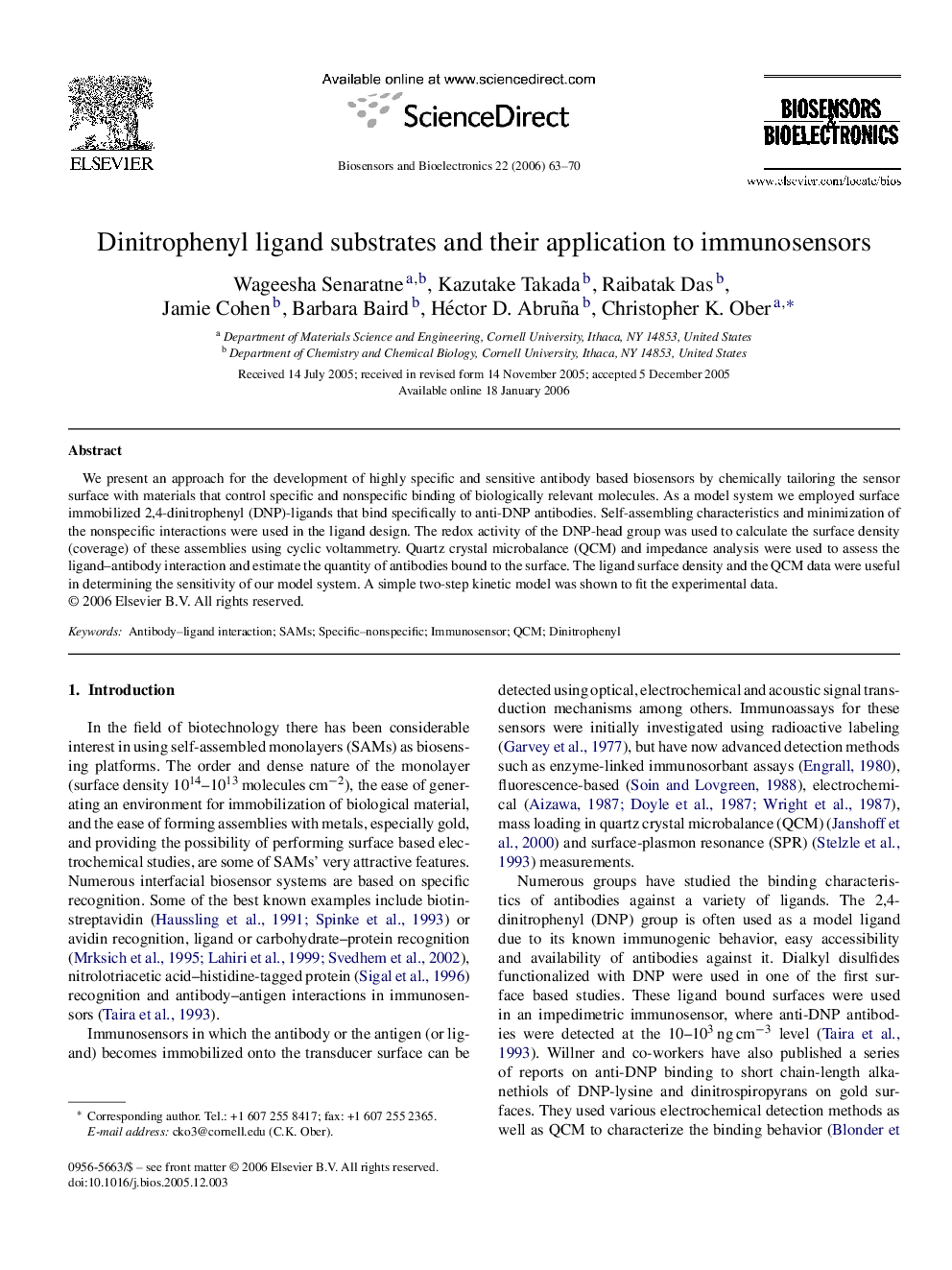| کد مقاله | کد نشریه | سال انتشار | مقاله انگلیسی | نسخه تمام متن |
|---|---|---|---|---|
| 870001 | 909846 | 2006 | 8 صفحه PDF | دانلود رایگان |

We present an approach for the development of highly specific and sensitive antibody based biosensors by chemically tailoring the sensor surface with materials that control specific and nonspecific binding of biologically relevant molecules. As a model system we employed surface immobilized 2,4-dinitrophenyl (DNP)-ligands that bind specifically to anti-DNP antibodies. Self-assembling characteristics and minimization of the nonspecific interactions were used in the ligand design. The redox activity of the DNP-head group was used to calculate the surface density (coverage) of these assemblies using cyclic voltammetry. Quartz crystal microbalance (QCM) and impedance analysis were used to assess the ligand–antibody interaction and estimate the quantity of antibodies bound to the surface. The ligand surface density and the QCM data were useful in determining the sensitivity of our model system. A simple two-step kinetic model was shown to fit the experimental data.
Journal: Biosensors and Bioelectronics - Volume 22, Issue 1, 15 July 2006, Pages 63–70